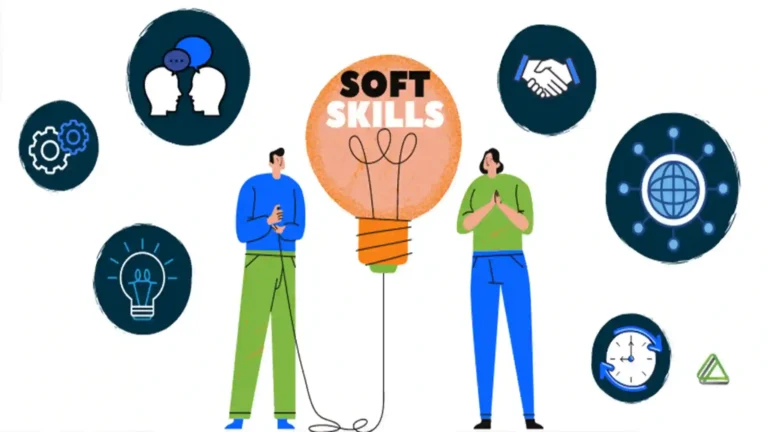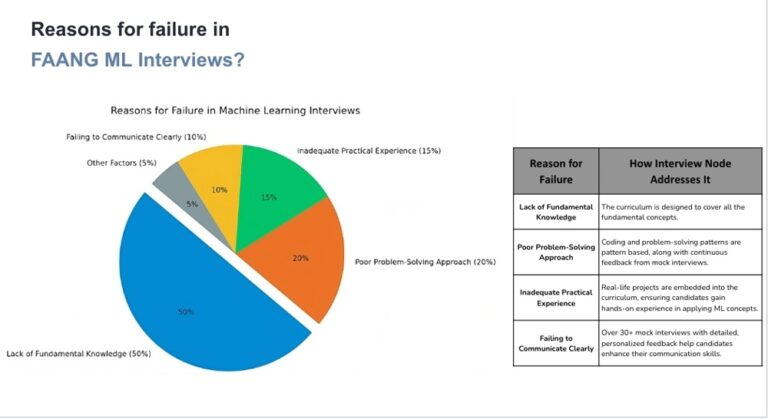1.
Introduction
In today's competitive tech
industry, machine learning (ML) engineers are in high demand. A report from Gartner predicts that by 2025,
AI and ML will generate close to $4 trillion in business value. However, securing a top job in ML isn’t just about having the right academic credentials or certifications; companies are looking for engineers who can demonstrate real-world problem-solving abilities through hands-on experience. That’s why creating a compelling ML portfolio for job seekers is essential to stand out.
A well-crafted ML portfolio
is the key to standing out in a crowded job market.
According to a 2022 LinkedIn
survey, 72% of recruiters say that candidates with strong portfolios showcasing their ML projects are more
likely to get interviews. This blog will walk you through building a compelling ML portfolio that highlights
your skills and demonstrates your readiness for top-tier roles.
2. Why an ML
Portfolio Matters
The demand for machine
learning engineers is skyrocketing. The U.S. Bureau of Labor Statistics forecasts a 22% job growth in AI and
ML-related fields through 2030—far faster than the average for all occupations. With this surge in demand
comes increased competition. Companies such as Google, Facebook, and Amazon receive thousands of
applications for ML roles every year, and recruiters are no longer solely relying on resumes or degrees to
make their selections.
In a 2021 interview,
Jason Warner, former CTO of GitHub, emphasized this shift: “In today’s tech world,
employers are looking for candidates who can show—not just tell—how they’ve applied their skills. A
portfolio allows you to demonstrate the depth and breadth of your knowledge and gives hiring managers a
sense of your approach to solving complex problems.”
Research from O'Reilly
further supports this, with 68% of hiring managers in AI fields saying they prioritize hands-on project
experience over academic qualifications. A portfolio not only showcases your technical expertise but also
provides insight into your problem-solving approach, creativity, and ability to deliver end-to-end
solutions. In other words, it’s not enough to know machine learning concepts—you have to show how you've
applied them to real-world scenarios.
3. Key Components
of a Strong ML Portfolio
A strong ML portfolio is a
reflection of your versatility as an engineer. It's not just a collection of projects but a curated showcase
of how you’ve used different techniques to solve various types of problems. Here are the core components
every impressive ML portfolio should include:
Data
Preprocessing: This is where raw data is transformed into something useful. According
to a 2022 report by Kaggle, nearly 50% of data scientists say that the most time-consuming part of
any ML project is data cleaning. Demonstrating your ability to handle messy datasets—removing
duplicates, filling in missing values, and handling outliers—shows recruiters you can tackle
real-world data challenges.
Feature
Engineering: Andrew Ng, a pioneer in AI, once stated: “Coming up
with features is difficult, time-consuming, requires expert knowledge. ‘Applied machine
learning’ is basically feature engineering.” Showcase how you’ve created meaningful
features from raw data to improve model performance. Highlight any unique approaches you took, such
as domain-specific transformations or new feature combinations.
Model Building
& Fine-Tuning: Your portfolio should demonstrate proficiency with a variety of
algorithms, from logistic regression to advanced deep learning models. Be sure to showcase projects
that include fine-tuning efforts, such as grid search or random search for hyperparameter
optimization. According to a 2021 survey by Indeed, 78% of recruiters say they prefer candidates who
demonstrate their ability to optimize models for performance.
Model
Deployment: Deploying a machine learning model in production is a key skill, yet it’s
often neglected in portfolios. Highlight projects where you’ve deployed models using cloud platforms
like AWS, Google Cloud, or Azure. A recent study from Deloitte suggests that 40% of businesses fail
to see the ROI from their AI projects due to deployment challenges. Including a deployed model shows
that you understand the full lifecycle of machine learning—from ideation to production.
When choosing projects to
include, focus on diversity. Aim to cover different domains, such as natural language processing (NLP),
computer vision, or reinforcement learning, while also emphasizing your ability to solve practical problems.
Data from KDnuggets shows that engineers with multi-domain experience are 60% more likely
to be considered for senior roles in ML.
Interactive elements can
also enhance your portfolio. Embedding Jupyter notebooks, sharing links to GitHub repositories, or providing
live demos through platforms like Streamlit or Gradio can make your work more engaging. A Stack Overflow
study found that 85% of hiring managers prefer interactive portfolios because they offer deeper insight into
the candidate’s coding style and thought process.
4. Tools &
Platforms to Build and Showcase Your Portfolio
A solid portfolio is only as
good as its presentation. Today, various platforms allow you to effectively showcase your machine learning
projects to potential employers.
GitHub:
As the go-to platform for hosting code, GitHub plays an integral role in your ML portfolio. But
according to a survey by HackerRank, only 20% of ML engineers effectively use GitHub by properly
documenting their work. Make sure your repository contains clear README files that outline the
purpose of each project, the approach taken, results obtained, and instructions for running the
code. Well-documented projects, including explanations and comments within the code, show that you
can communicate technical details clearly.
Kaggle:
Kaggle has emerged as a top platform not only for competitions but also for showcasing ML skills. By
participating in Kaggle competitions or using their extensive datasets for your projects, you can
demonstrate your ability to handle real-world problems. Data from Kaggle reveals that top-ranked
participants are 50% more likely to receive job offers from tech companies, making it a valuable
addition to your portfolio.
Personal
Website: A personal website allows you to showcase your work in a controlled
environment. Adrian Rosebrock, founder of PyImageSearch, suggests: “Your
website should not just host your portfolio—it should tell your story. Share your thought
process, describe the challenges you overcame, and demonstrate how your solutions made an
impact.” Creating a well-structured website where recruiters can easily browse your
projects is key to making a lasting impression.
Blogs &
Tutorials: Writing technical blogs or tutorials about your projects can further
establish your expertise. Sharing insights on platforms like Medium or Dev.to allows you
to build a personal brand and demonstrates your ability to communicate complex topics to a broader
audience. Research by IEEE shows that engineers who blog about their work are seen as thought
leaders in their field, giving them a competitive edge during job interviews.
Data from the Stack Overflow
Developer Survey shows that developers with well-maintained GitHub profiles or personal websites are 40%
more likely to be contacted by recruiters, proving that presentation matters as much as technical
skills.
5. Showcasing
Your Soft Skills Alongside ML Projects
While technical prowess is
essential, companies are increasingly looking for candidates with strong soft skills. In fact, a 2022
LinkedIn survey revealed that 92% of recruiters consider soft skills just as important as hard skills in the
hiring process.
Collaboration
& Communication: Satya Nadella, CEO of Microsoft, has highlighted
the importance of collaboration in AI teams: “The ability to work together and leverage each
other’s strengths is what drives successful innovation.” Showcase collaborative projects,
particularly those involving team-based competitions or open-source contributions. Clear,
well-documented code demonstrates strong communication skills, while collaborative projects
highlight your ability to work in a team environment.
Community
Involvement: Participating in the open-source community not only enhances your
technical skills but also signals your ability to collaborate and give back. Contributing to
repositories, providing feedback, or answering questions on forums like Stack Overflow demonstrates
that you're engaged in the broader ML community. According to a 2023 report by HackerRank, 68% of
recruiters value candidates who actively participate in open-source projects.
Storytelling: Storytelling can elevate your portfolio beyond a simple
collection of projects. Instead of just listing technical achievements, explain the context behind
each project. Why did you choose this problem? What obstacles did you face, and how did you overcome
them? By telling a story, you give recruiters insight into your thought process and
creativity.
A survey conducted by
Glassdoor found that 89% of hiring managers view communication and teamwork as critical skills for ML
engineers, reinforcing the idea that soft skills should be showcased in your portfolio alongside technical
expertise.
6. How to Tailor
Your Portfolio for ML Job Interviews
A well-rounded portfolio is
crucial, but tailoring it to the specific role you’re applying for can significantly improve your chances of
success. According to a 2023 CareerBuilder survey, 57% of hiring managers said candidates with customized
portfolios that align with the job description are more likely to be interviewed.
Customizing for
the Role: When applying for a machine learning role, your portfolio should reflect the
skills and projects most relevant to the position. For example, if you're applying for a job focused
on natural language processing (NLP), emphasize projects where you’ve worked with text data, built
language models, or implemented chatbots. Similarly, for roles in computer vision, highlight
projects that involve image classification or object detection.
Relevance is
Key: Recruiters have limited time to assess applications. Karén
Simonyan, a research scientist at DeepMind, explains: “Hiring managers look for
portfolios that align with their company’s goals and technology stack. Candidates should
prioritize relevance over quantity.” Be selective about the projects you include, ensuring
they demonstrate the specific skills the employer is seeking.
Preparing for
Interview Questions Based on Your Portfolio: During interviews, recruiters will often
ask about the projects you’ve showcased. Prepare to discuss each project in detail, including the
challenges you faced and the solutions you implemented. According to data from Glassdoor, 63% of
hiring managers say that deep technical discussions about portfolio projects are key during
interviews. Use this opportunity to demonstrate your problem-solving ability and technical
depth.
Additionally, many top
companies prefer candidates who have demonstrated experience in deploying machine learning solutions at
scale. Be sure to highlight any projects where you’ve worked with cloud platforms or deployed models in
production environments, as this shows you’re capable of delivering real-world solutions.
7. Examples of
Successful ML Portfolios (Case Studies)
One of the best ways to
understand what makes a portfolio stand out is by analyzing successful examples. Here are a few common
traits seen in portfolios from top-tier ML engineers.
Jeremy Howard’s
Portfolio: As the co-founder of Fast.ai and a leader in the AI
community, Jeremy Howard has built a career by focusing on accessibility and
simplicity in machine learning. His portfolio is notable for its clear documentation and emphasis on
real-world applications, such as projects that involve healthcare and satellite imagery. His
approach shows that impactful, socially-relevant projects can set you apart from other candidates.
Quote: “Projects that show you can make a tangible difference in the real world
carry much more weight than purely theoretical work,” Howard explains in a recent
interview.
Rachel Thomas’s
GitHub Projects: Co-founder of Fast.ai and a professor at the
University of San Francisco, Rachel Thomas is another example of a successful
portfolio. Her GitHub repository is rich with tutorials, code examples, and notebooks. One of her
standout traits is the way she uses her portfolio to explain complex topics in simple terms,
demonstrating her ability to communicate technical concepts clearly—something highly valued in
industry roles.
Dmitry
Ulyanov's
Kaggle Profile: A Kaggle Grandmaster, Dmitry Ulyanov showcases his
Kaggle competition history and projects directly on his GitHub and LinkedIn profiles. His portfolio
not only highlights his ability to solve complex problems but also emphasizes his ranking on Kaggle
leaderboards—an accomplishment that immediately signals competence in competitive
environments.
Why These Portfolios
Work: These examples highlight several key factors that make a portfolio successful:
Strong documentation
and
clear communication of results.
A focus on real-world
applications that demonstrate the ability to solve impactful problems.
Demonstrating expertise
in specific ML domains, such as NLP, computer vision, or reinforcement learning.
Recruiters often note that
portfolios like these, which balance technical skills with impactful, well-communicated projects, leave a
lasting impression. According to a report by IEEE Spectrum, 76% of hiring managers prefer portfolios that
include detailed explanations of project outcomes, highlighting why the work matters.
8. Common
Mistakes to Avoid in Your ML Portfolio
While building an ML
portfolio, it’s easy to make some common mistakes that can undermine your efforts. Knowing what to avoid is
just as important as knowing what to include.
Overly Complex
Projects: While complexity can showcase your technical skills, it can also alienate
recruiters if it isn’t well explained. Andrej Karpathy, former Director of AI at
Tesla, advises against prioritizing complexity: “It’s not about how complicated your model
is—it’s about how well you understand the problem you’re solving.” Instead of focusing on
the complexity of the algorithms used, aim to clearly explain how you applied them to solve a
specific problem.
Poor
Documentation: Failing to provide proper documentation is one of the biggest portfolio
pitfalls. According to a 2023 report by GitHub, 45% of recruiters discard poorly documented
portfolios because it makes it difficult to evaluate the candidate’s approach. Ensure that your code
is well-organized, with comments and README files that explain the purpose, methodology, and results
of each project.
Neglecting
Deployment: Many portfolios focus on model-building but overlook deployment. In a 2022
interview, David Chappell, a cloud computing expert, pointed out: “The most
common weakness I see in ML portfolios is the lack of production-ready solutions. Employers want
to know you can take a model from development to deployment.” Be sure to include projects
that demonstrate your ability to deploy models in real-world settings, whether through cloud
services or local servers.
Avoiding these mistakes can
significantly increase your portfolio's appeal to recruiters. Research from McKinsey shows
that 64% of companies struggle to move ML projects from prototype to production, so demonstrating this
ability makes you stand out.
9. Final Tips on
Building a Compelling ML Portfolio
As you finalize your ML
portfolio, here are some final tips to ensure it leaves a lasting impression on recruiters:
Keep It
Updated: Machine learning is a rapidly evolving field. Ensure your portfolio stays
up-to-date with the latest trends, tools, and technologies. A 2023 study by Indeed found that
candidates who regularly updated their portfolios were 50% more likely to land interviews than those
who did not. Aim to add new projects, blog posts, or contributions to open-source repositories as
you progress in your career.
Seek
Feedback: Don’t be afraid to ask for feedback from peers, mentors, or online
communities like GitHub or Stack Overflow. François Chollet, creator of Keras,
emphasizes the importance of feedback: “Iterate on your portfolio as you would on your models.
The more feedback you get, the better you’ll understand how to improve.” Incorporating
suggestions can help refine your portfolio and ensure it’s appealing to recruiters.
Stay
Current: Demonstrate that you are aware of the latest ML trends. Include projects that
showcase your knowledge of cutting-edge tools like transformers, MLOps, or federated learning.
According to a 2022 IBM report, candidates with experience in these areas have a
higher likelihood of securing roles in top-tier companies.
In summary, building a
machine learning portfolio is not just about showcasing your technical skills—it’s about telling your story
as an engineer. Recruiters want to see not only how you solve problems but also why the problems matter and
how your solutions create value. With the right projects, clear communication, and thoughtful presentation,
your portfolio can become a powerful tool in securing your next role in machine learning.
10.
Conclusion
In the fast-growing field of
machine learning, your portfolio is one of the most critical tools for demonstrating your skills to
potential employers. From showing your ability to handle real-world data to showcasing deployed models, a
strong portfolio can set you apart in a competitive job market. By focusing on relevant, well-documented
projects and incorporating feedback, you’ll be in a stronger position to land your next ML job.
The future of machine
learning is bright, and companies are looking for engineers who can deliver tangible results. Start building
or updating your portfolio today—your next great opportunity might be just around the corner.






